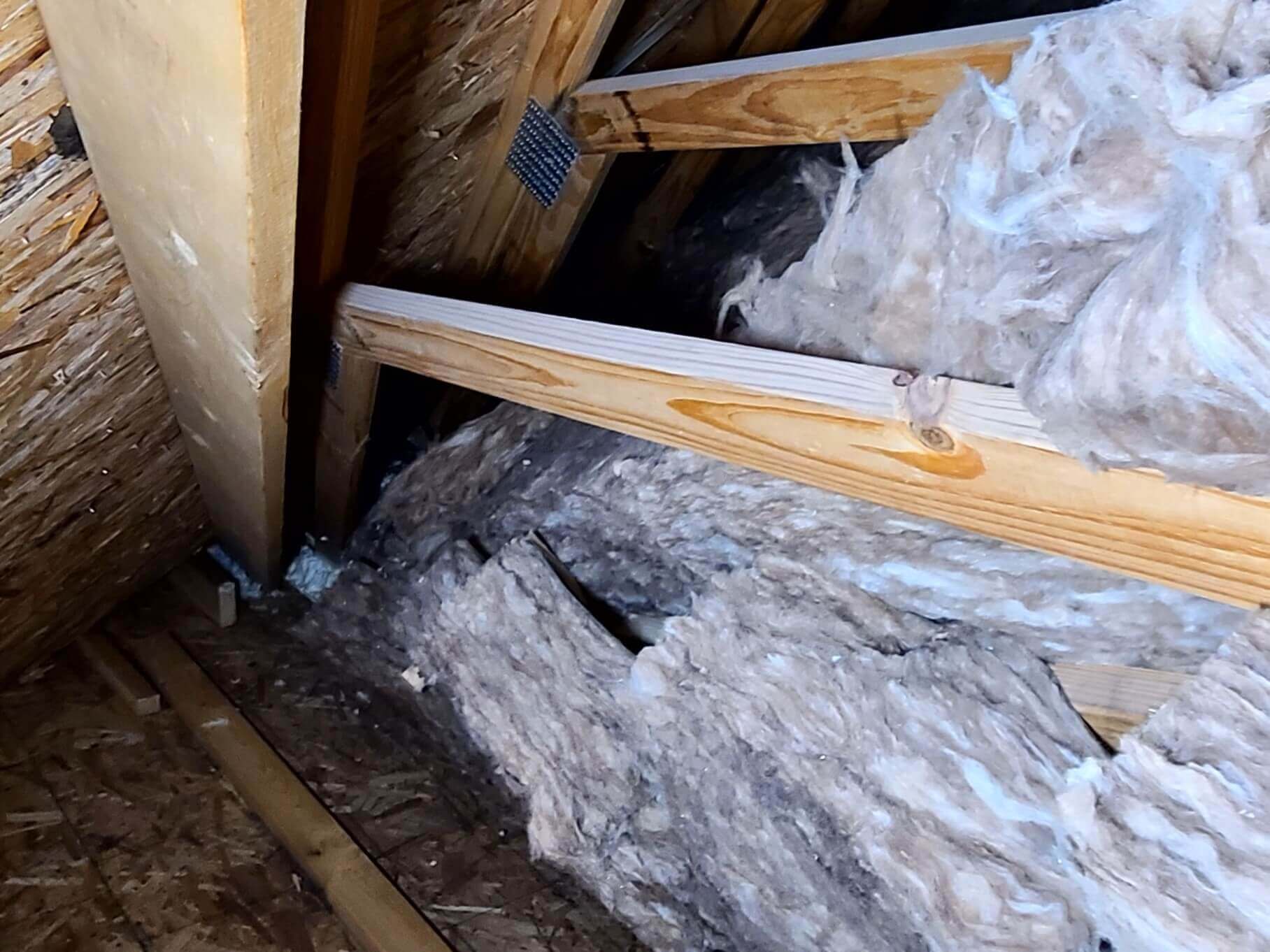Does Attic Insulation Need To Be Removed Before Installing Spray Foam?
February 7th, 2024
3 min read
By Kilian Agha

Your attic needs new insulation. You’ve tried multiple fixes for your attic, but both batts and blown-in insulation have let you down. Now that you’ve settled on spray foam insulation as a solution, you’re wondering if you must remove the other insulation in your attic. Was all the other insulation just a waste of money if you end up removing it?
South Central Services has insulated hundreds of homes with spray foam insulation in the Greencastle area. Homeowners often reach out to us about insulating their attics with spray foam because their current insulation products aren’t cutting it. Your existing attic insulation must be removed before spray foam is installed, but there is a rhyme and reason for that removal.
By the end of this article, you will understand:
- What insulations are common in attics
- How spray foam insulation offers superior performance
- Why existing insulation must be removed from the attic
Don't have time to read right now? Check out everything you need to know at a glance.
What Insulations Are Commonly Found In Pennsylvania Attics?
When our team is called to a site visit for an attic, we often find a combination of fiberglass batts and blown-in insulation. These two types of insulation are some of the most popular choices for attics because they are less expensive to invest in.
However, these insulations fail to provide the energy savings homeowners hoped for. Often, these insulations end up being combined or piled on top of each other for years in an attempt to boost their effectiveness.

If your attic has insulation similar to the picture above, you are not alone. Many other homeowners in Franklin County and surrounding Pennsylvania counties have attics with the same insulation. These homeowners are experiencing the same high energy bills, hot summer attics, and frustrations as you are.
How Spray Foam Insulation Offers Better Performance
The reason that you’ve chosen spray foam insulation is likely because of its performance. After years of being let down by your attic insulation, you’ve selected a reliable product that delivers proven results. You need to lower your energy bills and make your attic less insufferably hot in the summer.
Spray foam insulation’s superior performance comes from its air-sealing capabilities. All attic insulations are expected to meet a certain R-value to prove their heat-resistant abilities. At the correct depths of insulation, R-value demonstrates a resistance to conductive heat transfer. However, spray foam insulation is the only attic insulation that also resists convection heat.
Heat travels conductively, or through direct contact. But heat also travels through the air through convection. When spray foam creates an airtight seal, it stops air from randomly exchanging. The heat content in the air is also prevented from exchanging.
Why Existing Insulation Must Be Removed Before Installing Spray Foam
For spray foam to deliver an airtight seal, it must adhere to the surface it is sprayed against. The adhesion of spray foam is one of the keys to its high performance.
Fiberglass batts and blown-in products cannot seal your attic from random air exchange. Air passes through batt and loose fill insulations. But spray foam insulation is like glue, bonding to the surface of your attic floor or walls. At a certain depth, spray foam creates that airtight seal.
If spray foam insulation were sprayed directly against a pile of existing insulation, it could not adhere properly. There is nothing that the existing insulation can offer to the performance of your attic insulation.

It can be devastating to think about the money that you previously spent on your attic being dragged down the stairs and stuffed into garbage bags. Know that if your existing insulation is not removed, spray foam will become another unfortunate waste of money that could not lower your energy bills.
Another Reason To Remove Existing Attic Insulation
Attic insulation is often infested with rodent droppings. Not only is this unsanitary, but it can also cause a bad odor.
If the existing insulation is installed on your attic floor and we install spray foam on the ceiling and walls, adhesion is not an issue. However, the spray foam in the attic would create an airtight seal above the floor insulation that was not removed.
Any odors from the existing insulation that used to escape through your vented attic would be trapped in your home.
Regardless of where spray foam will be installed in your attic, it is our policy to remove existing insulation. Even when not an adhesion issue, removal is in your best interest.
The Bottom Line About Existing Insulation When Installing Spray Foam
Spray foam insulation is the best attic insulation available. Unlike other popular insulations, it can create an airtight seal and reliably lower energy bills. Spray foam is also a permanent solution, allowing homeowners to never have to think about their attic insulation again.
In order for spray foam to create this airtight seal and offer energy savings, the product must be able to adhere to the attic floors or walls. This adhesion is impossible if these surfaces are covered with existing insulation. Existing attic insulation must be removed before spray foam is installed.
Now that you understand why your existing attic insulation must be removed, choose your next step:
- Learn the step-by-step process to insulate an attic with spray foam
- Discover why you should choose South Central Services to insulate your attic
- Schedule your attic visit with South Central Services
Disclaimer: While we strive to publish information accurate to building science, local building codes and standards supersede our recommendations.
Kilian has co-owned and operated South Central Services for 8 years. He is passionate about community involvement. In his spare time, he enjoys being with his family, playing ice hockey, and going fishing with friends.
Topics:


